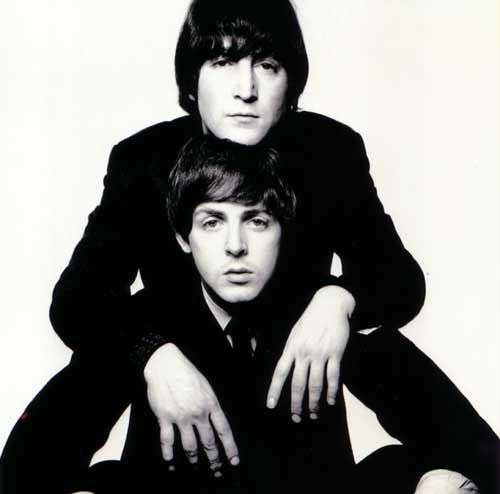Here’s a chord progression:
|| C | C | F | Fminor | C | G | C | C ||
In the key of C, the Fmajor chord (IV) is followed by the Fminor (IVminor), Fminor is not in the key of C major. But it’s still based around F. It adds some poignancy and even darkness to a chord progression which would otherwise be about as straightforward as can be – C, F, and G.
Although they weren’t the first to use it, I first became aware of this sound through the Lennon & McCartney Encyclopedia of Songwriting – the music of The Beatles. Paul McCartney was even quoted as saying that going from the IV major to the IV minor chord was the “natural thing to do”.
They used it in ‘In My Life’ (listen below), ‘I Call Your Name’, ‘You Won’t See Me’, ‘When I’m 64’, ‘Across The Universe’, ‘’If I Fell’, ‘Blackbird’, ‘Hello Goodbye’, ‘A World Without Love’ (Peter & Gordon)… I could go on… and on. (Incidentally John and Paul both used this device, in equal measure.)
It became perhaps the single most ‘Beatle-esque’ aspect of their songwriting. Because they did it constantly, they came to own it. And since Lennon & McCartney, along with Bob Dylan, were the most influential songwriters of their time, a lot of other writers started using this technique too. Originally to get songs to sound more ‘Beatle-esque’, but after a while it just became a common part of pop songwriting language.

Non-Beatle hit songs using the IV major to minor include Radiohead’s ‘Creep’, Green Day’s ‘Wake Me Up When September Ends’, Oasis’s ‘Don’t Look Back In Anger’, and many many other songs, famous and obscure.
I run many songwriting workshops, so I hear a lot of songs from a lot of songwriters, and the IVmajor to minor has become very familiar to me; more so as the years have passed. Everyone with a little harmonic swagger knows it, and (almost) everyone uses it at one time or another… or more than that (including me!).
The other day I was walking through an almost empty department store. They were playing modern Christmas songs – not the classics, but new holiday songs by contemporary artists. And yes, many if not most of these Christmas songs used the IVmajor to IVminor.
This crystallized a thought I’ve had before: We may have too much of a good thing here.
The chords can still sound great but… They used to be a novelty. By now they’ve become such a familiar part of songwriting for some of us that, like The Beatles, it seems like the “natural thing to do”.
Also, I think it’s easy to use the IVmajor/minor thinking, “I’ve got this cool and clever trick that’s really going to make my song sound and feel a little different”.
It might sound good… but it’s not going to sound different anymore. Maybe even the opposite.
(Thanks to the Beatles Songwriting Academy for research on The Beatles’ use of this songwriting device.)
Let me know your thoughts in the Comments section below:
And please share on facebook etc. by clicking the tabs beneath the video –

Good post, Tony. I feel it’s best avoided unless really called for. If it really enhances/fits the melody, great. If it’s just a knee-jerk drama-creator, boo. Paula Kelley — genius songwriter and my partner — started calling it “the gratuitous minor” in the late 90s and so it has remained, for us. She called me out for it in a song I’d really liked and once I removed the offending minor, that section became more interesting, partly because I think it had become almost expected to hear the major to minor.
Aaron,
Exactly; well put. You and Paula were ahead of the curve!
Thanks,
Tony